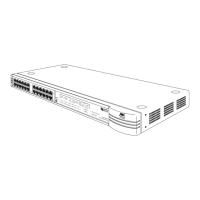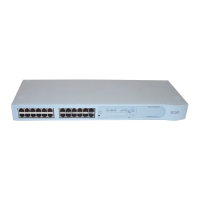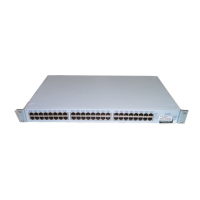Software Features Explained 23
Flow Control
All the ports on your Switch support flow control, which is a congestion
control mechanism. Congestion is caused by one or more devices sending
traffic to an already overloaded port on the Switch. Flow control prevents
packet loss and inhibits the devices from generating more packets until
the period of congestion ends.
Flow control is implemented in two ways:
■
IEEE 802.3x standard for ports operating in full duplex.
■
Intelligent Flow Management (IFM), a 3Com proprietary method of
flow control, for ports operating in half duplex. IFM should only be
enabled if the port is connected to another switch, or an endstation. If
the port is connected to a repeated segment with local traffic, IFM
should be disabled.
For information about enabling flow control on a port, see
“Configuring
a Port”
on
page 59
.
Traffic Prioritization
Your Switch supports IEEE 802.1p traffic prioritization, which allows data
that has been assigned a high priority to be forwarded through the
Switch without being obstructed by other data. The system works by
using the multiple traffic queues that are present in the hardware of the
Switch — high priority traffic is forwarded on a different queue from
other traffic, and it is always given preference over the other traffic.
Traffic prioritization can be useful for critical applications that require a
high Class of Service (CoS) from the network. This could include:
■
Financial applications
— Accounts departments that need
immediate access to large files and spreadsheets at the end of the
month.
■
CAD/CAM design applications
— Design departments that need
priority connections to server farms and other devices for transferring
large files.
■
Converged network applications
— Organizations with a
converged network (that is, a network that uses the same
infrastructure for voice data and traditional data) that require high
quality voice data transmission at all times.
